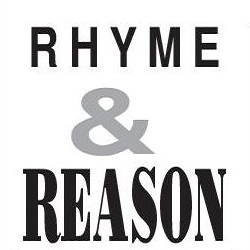‘Life’ In Lifestyle
| Date :14-Feb-2025 |

By Kartik lokhande :
The word ‘life’ reflects a set of values with positive attributes relating to physical, mental,
spiritual, social, cultural health. Whereas, the word ‘lifestyle’ has become synonymous with access to several things enabled only by economic aspect in one’s lifespan. Unfortunately, in the era of
consumerism, many of the youngsters tend to misinterpret lifestyle as the core value of life. Such a skewed thinking often leads one to the path of broken
relationships, fear of introspection, and
following superficial trends out of the
perceived deprivation of ‘style’ quotient.
ALL that glitters is not gold. Indeed! But, in today’s era, all that glitters is definitely sold. The people in general, and youngsters in particular, are so obsessed with glitter that they pay less heed to the utility or substance part of any product. For most of the people today, one’s decision to spend money on a product or service is defined more by ‘style’ quotient than values associated with ‘life’. As a result, ‘lifestyle’ has assumed greater importance than ‘life’ in it.
Those finding ‘lifestyle focus’ as something reflecting modernity do not realise that they are spending money on buying things they either do not need or use only once or twice in their lifetime. Since they do not realise, the market forces lure them into trends like fast fashion, party wear, beauty and personal care, binge eating, drink-and-eat combos, destination weddings, pre-wedding photoshoot outings, coffee gulping, protein shakes, fitness products, smoking, etc. For many observers, the list may include several other things. However, all these things are actually benefiting the market entities.
Datasets are available from various sources to highlight this point. Last year only, a study projected India’s $130 billion lifestyle market to grow to $210 billion over the next five years. Another study projected that the revenue generation of the fast food market in the country would grow from $29,110.2 million in 2021 to $47,768.4 million by 2028. One can find out such pieces of information easily to emphasise that the ‘lifestyle and related market’ is growing in India.
Unfortunately, though this part of the economy is booming, it is taking a heavy toll on the life of the people, especially the young Indians. As is common biological knowledge, a child’s digestive system is weak up to a certain age. Sadly, in the initial years only, many households are exposing children to chips, pizza, burgers, sandwiches, ‘soft’ drinks, sausages etc. Most of these food products find entry into households where home-cooking is considered ‘orthodox’ (read, outdated).
As the children in such households grow up, they start showing symptoms of obesity, blood pressure, disturbed renal functioning, and irritability in personality as their salt and sugar levels often fluctuate. There has been a tremendous increase in teenagers going to coffee hangouts, gulping large mugfuls of coffee of different flavours and types. Youngsters consume coffee even in areas where climate is not conducive for it. They do it out of the sense of ‘lifestyle’ or ‘trend’. In the process, they forget health consciousness.
The case of ‘lifestyle’ goes beyond food and beverages. Lot of people become victims of ‘fast fashion’ to avoid ‘embarrassment’ of wearing old but decent clothes at different functions. Ironically, these are the same people who flood social media platforms talking about ‘sustainability’. Same is true with electronic gadgets, which are often upgraded without any need, only to show to the society that one can afford the upgraded versions.
Many people compromise on ‘early to bed, early to rise’ discipline and regular walk or following exercise routine, but spend money to buy fitness products or protein shakes etc as if such products compensate for what is lost over the years. Smoking, social drinking, needless ‘therapeutic’ shopping, use of beauty and cosmetics products to hide loss of real healthy glow are some other examples.
Those indulging in these things do not even realise that they are victims. For, they become willful participants in ruining their own life while according more importance to style. The word ‘life’ reflects a set of values with positive attributes relating to physical, mental, spiritual, social, cultural health. Whereas, the word ‘lifestyle’ has become synonymous with access to several things enabled only by economic aspect in one’s lifespan. Unfortunately, in the era of consumerism, many of the youngsters tend to misinterpret lifestyle as the core value of life. Such a skewed thinking often leads one to the path of broken relationships, fear of introspection, and following superficial trends out of the perceived deprivation of ‘style’ quotient.
Of course, many households still follow the age-old wisdom that treats life as the inner core and style as the outer presentability.
These families keep sanity alive and know the distinction between a human being and an animal as highlighted in the rich repository of knowledge called ‘Hitopadesh’. Those who have forgotten ‘Hitopadesh’ must think over the message in the following lines, “Aahaar-Nidraa-Bhay-Maithunanch, Samanyametat Pashubhirnaranam; Dharmohi Teshamadhiko Vishesho:, Dharmena Hina: Pashubhi: Samanaa:” (Food, Sleep, Fear, and Mating are common habits between humans and animals.
‘Dharma’ is the special quality of humans. Without ‘Dharma’, humans are akin to animals). Speaking of mating, the emphasis today is on ‘enjoying’ (to use a decent word) instead of treating virginity as a sacred virtue, marriage as an institution, and family as a duty (not obligation). Clubbed with aforementioned aspects, this thing is resulting in increase in infertility, which may have long-term demographic consequences. What is being practised widely at present in the name of ‘lifestyle’ is smudging the difference between human beings and animals.
Does that augur well for a collectively welfarist and peaceful future? Does that augur well for a growing country like India, which will need more and more productive people? Does that augur well for families? The answers to only these three questions may bring more clarity on ‘life’ part of lifestyle!
